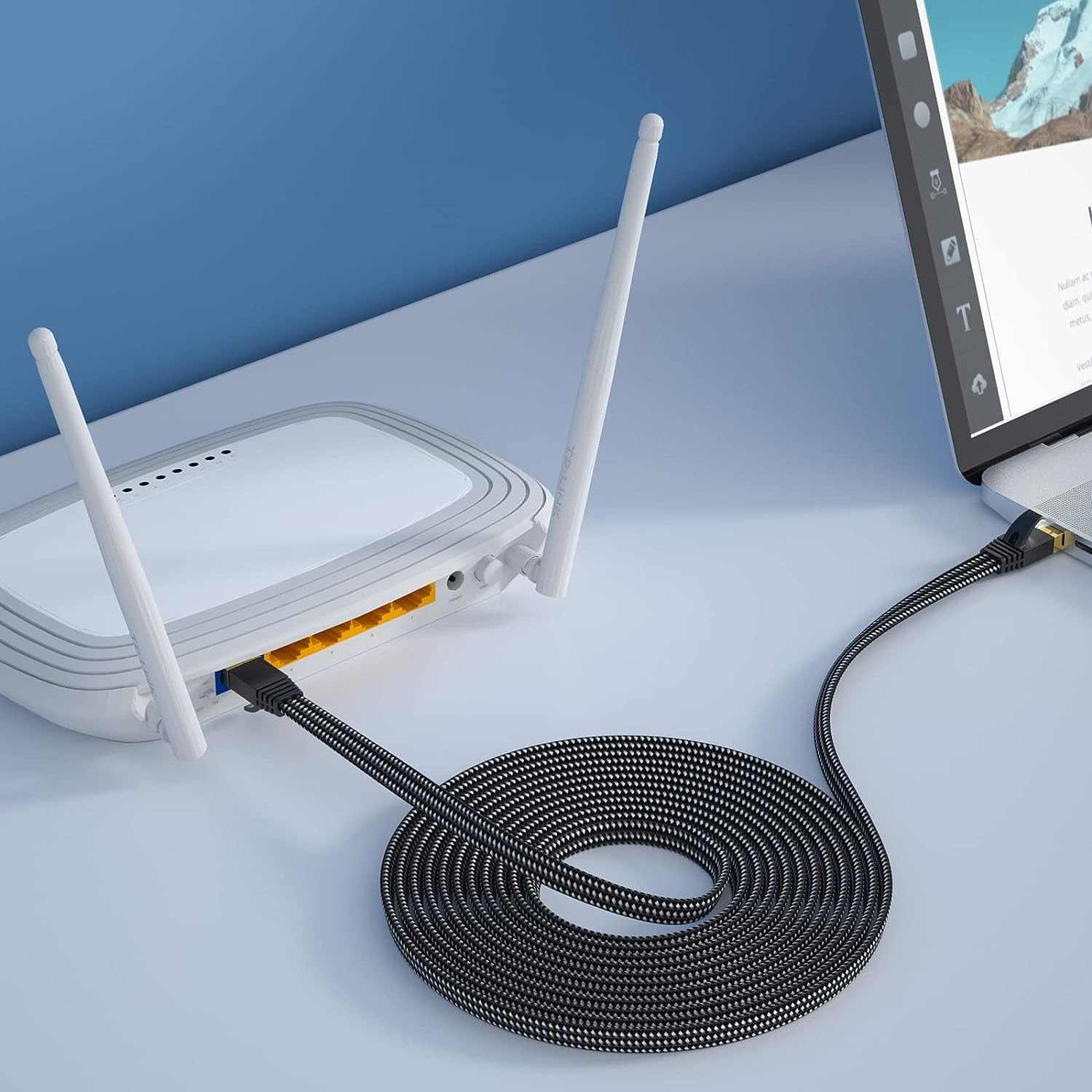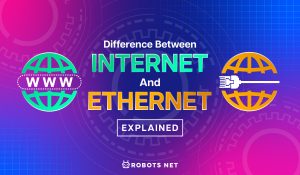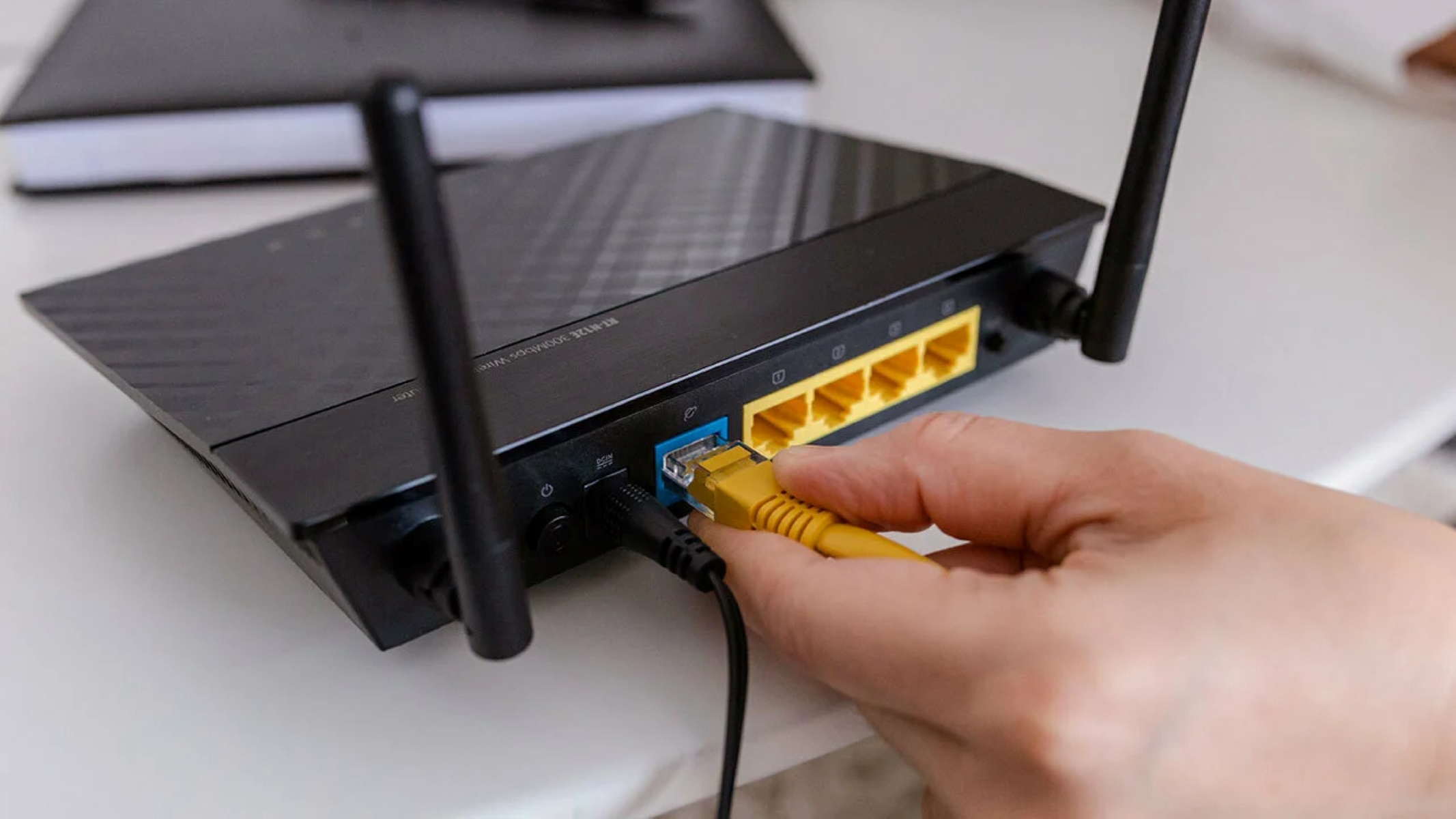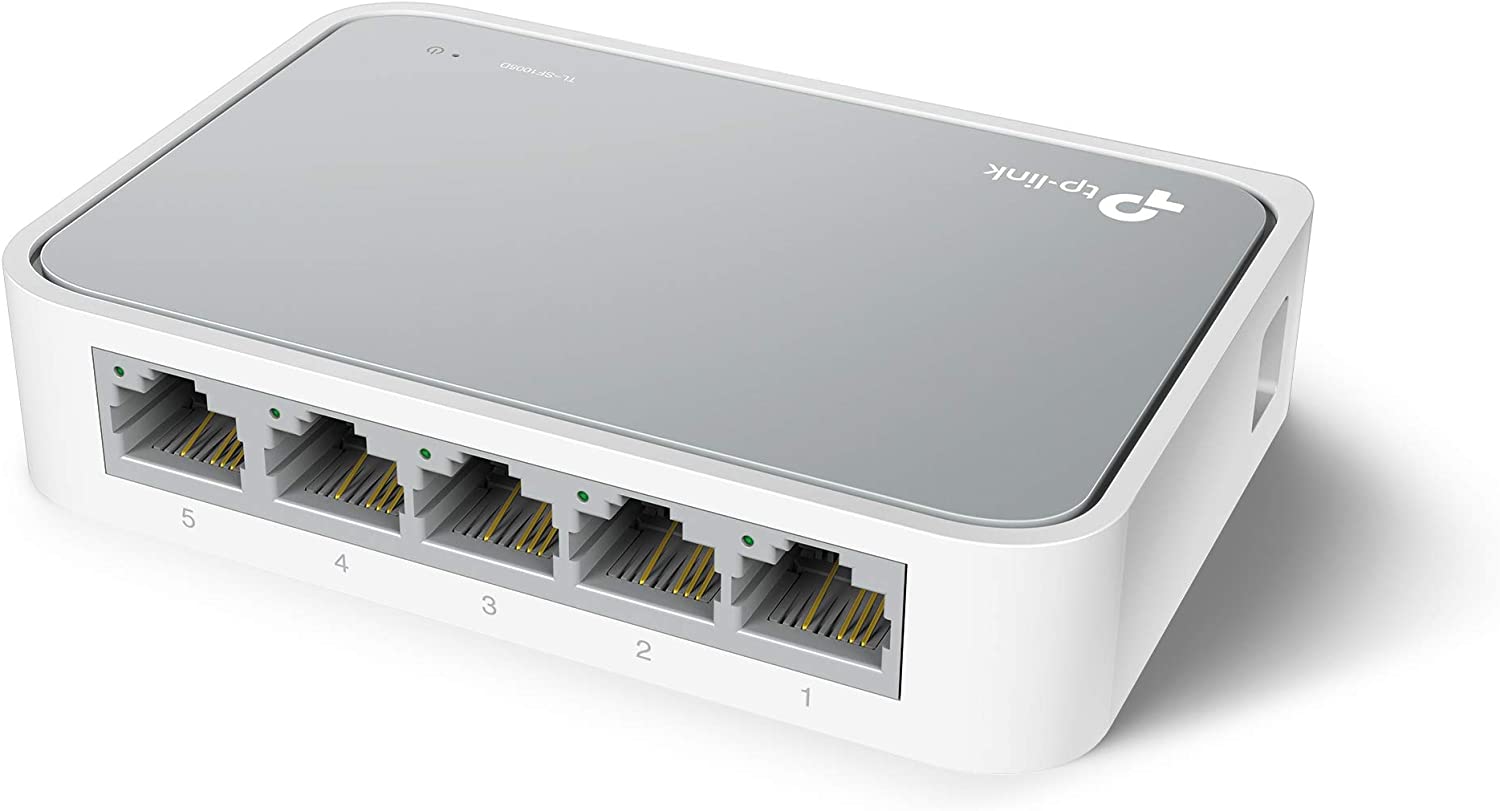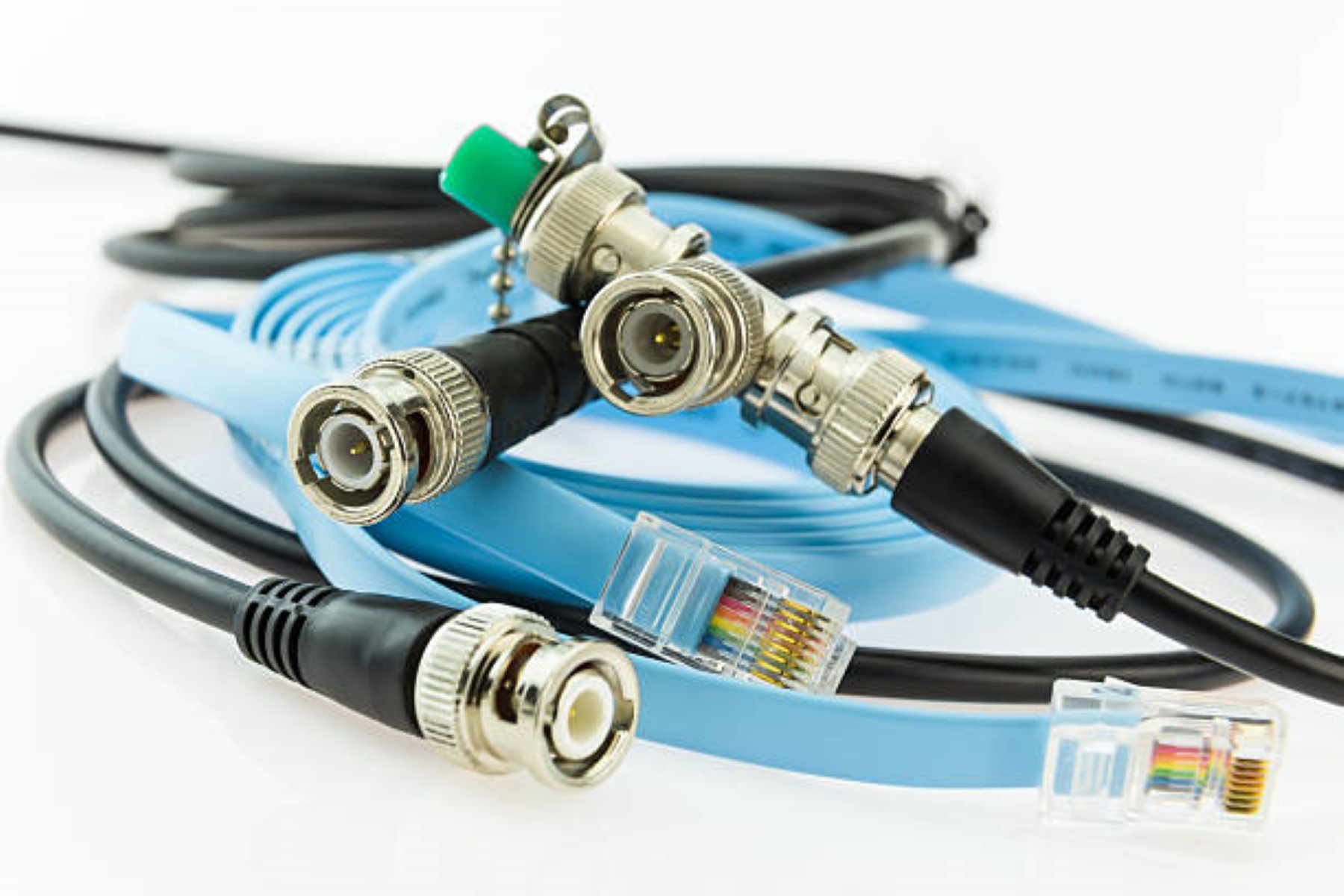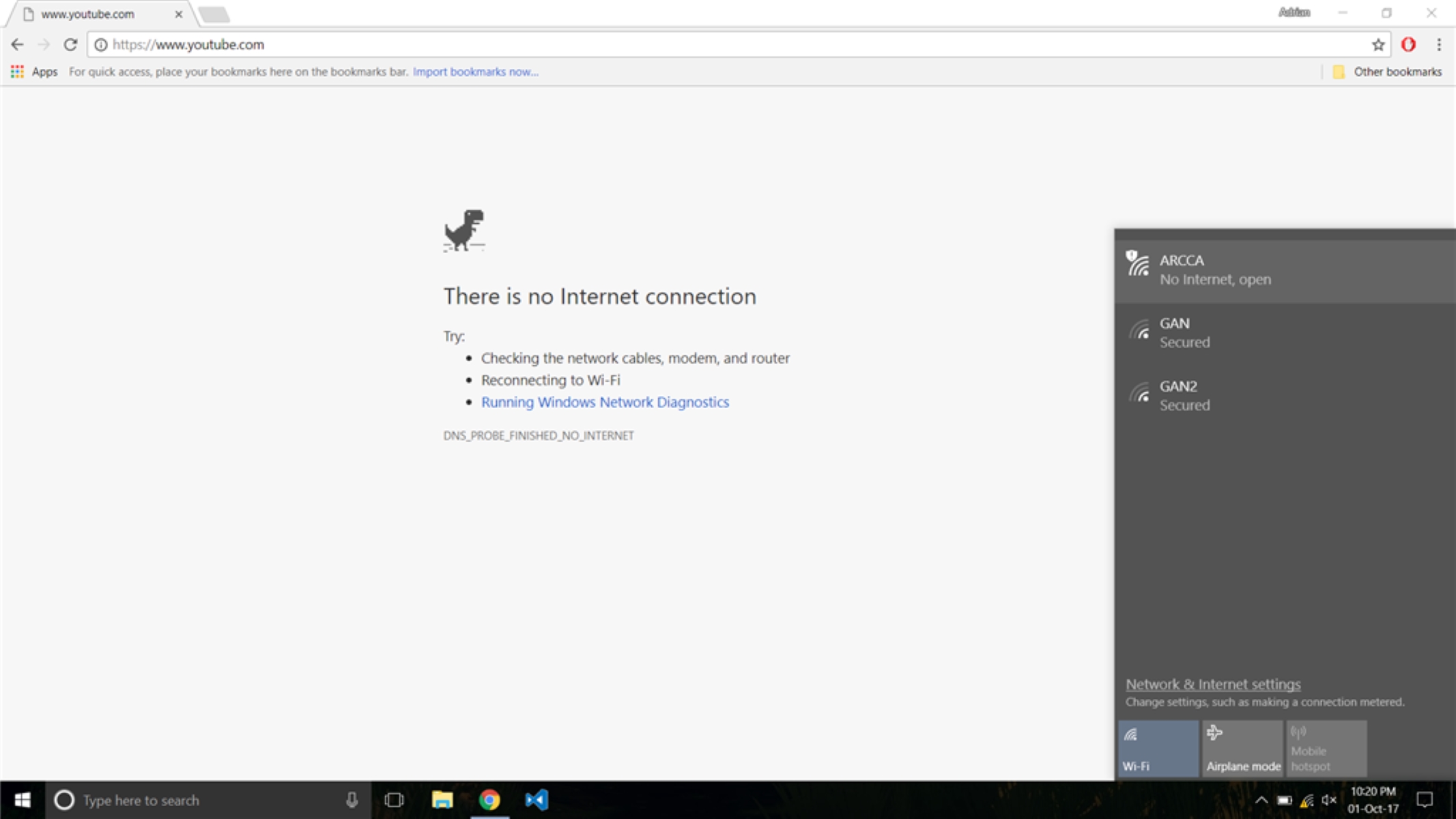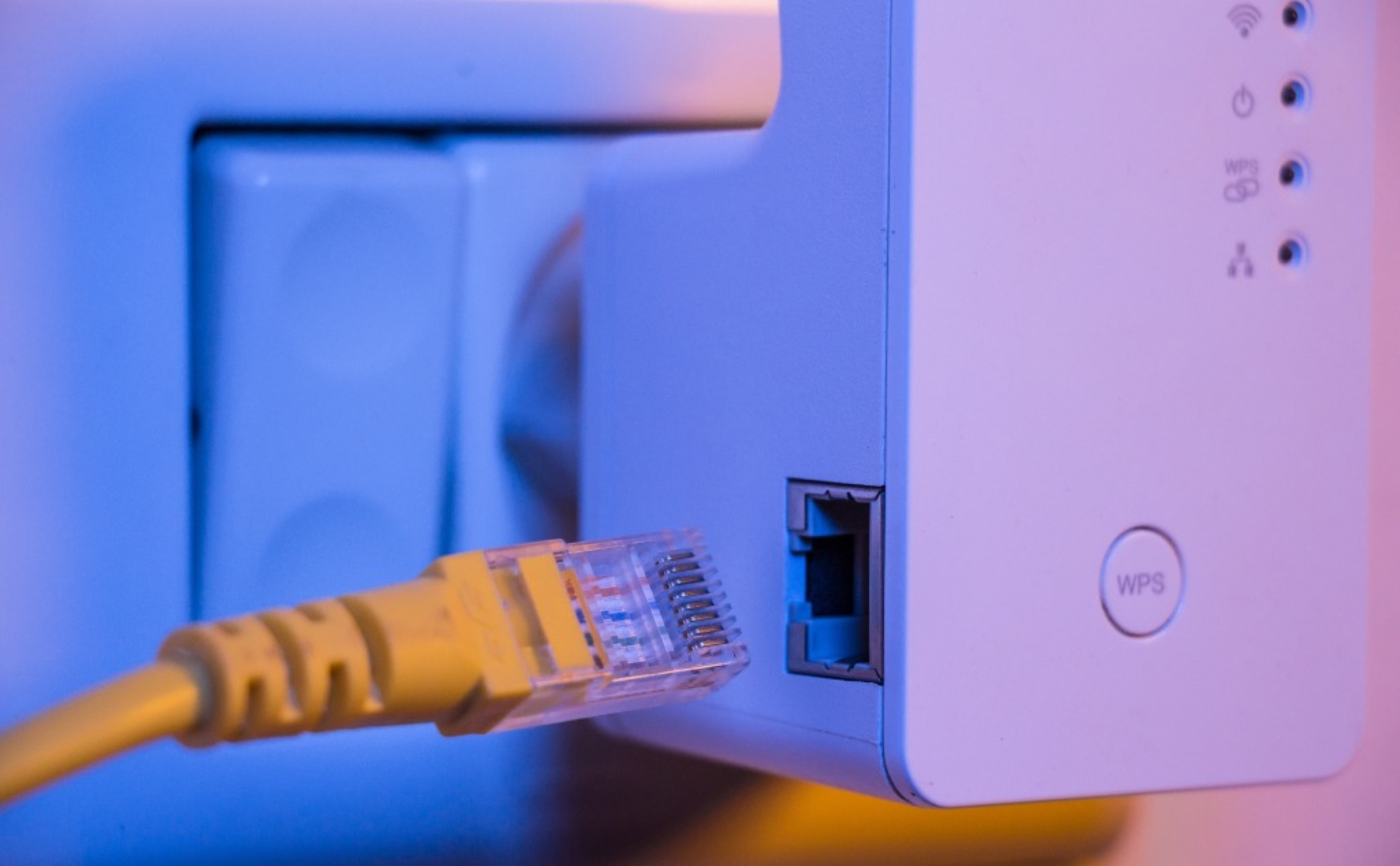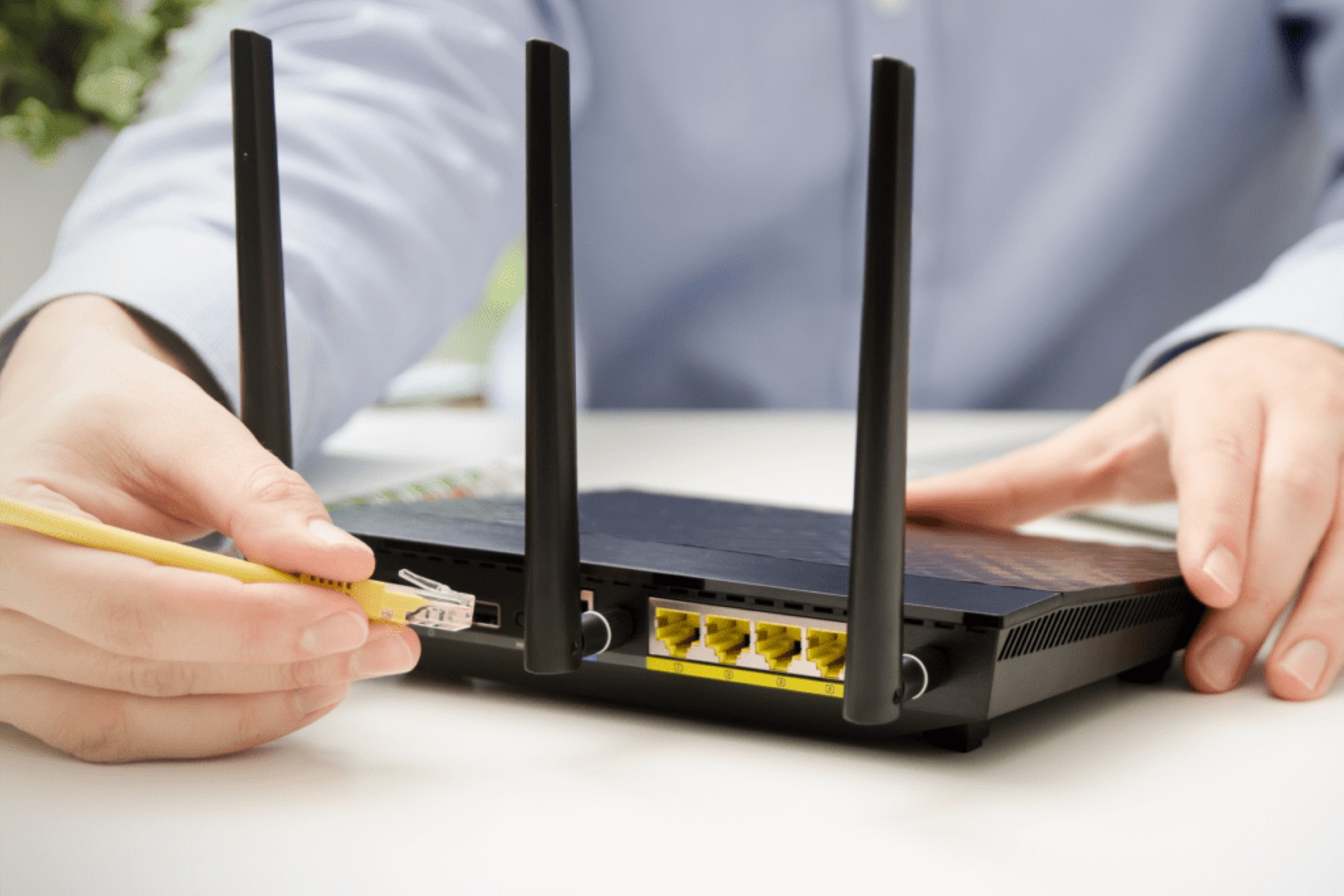Introduction
The internet and Ethernet are two terms that are often used interchangeably but they have different meanings and functionalities. In this article, we will explore the difference between the internet and Ethernet and gain a better understanding of how they work and their respective advantages and limitations.
In today’s digital age, the internet has become an integral part of our lives, allowing us to connect with people from all over the world, access information, and enjoy various online services. On the other hand, Ethernet, a technology commonly used in local area networks (LANs), enables devices within a specific network to communicate with each other. While both the internet and Ethernet play crucial roles in facilitating communication and data transfer, they have distinct characteristics and use cases.
Understanding the difference between the internet and Ethernet is essential, particularly for individuals or businesses looking to establish networks or navigate the world of connectivity. By delving into the nuances of these technologies, we can make informed decisions about our internet and network infrastructure, ensuring efficiency, security, and optimal performance.
In this article, we will explore the definition and functions of the internet and Ethernet, examine how they operate, compare their speed and bandwidth capabilities, discuss the cost and accessibility factors, analyze the different connection types they support, and evaluate the security aspects associated with each technology. By the end, you will have a clear understanding of the differences and similarities between the internet and Ethernet, helping you make informed decisions when it comes to your networking needs.
What is the Internet?
The internet is a global network of interconnected computers that enables the sharing and transmission of information across the globe. It is a vast infrastructure that connects millions of devices, ranging from computers and smartphones to servers and routers, allowing them to communicate and exchange data.
The internet operates on a set of protocols known as the Internet Protocol Suite, commonly referred to as TCP/IP. This suite of protocols ensures that data is transmitted in small packets and routed efficiently across different networks until it reaches its intended destination. This decentralized nature of the internet allows for its resilience and flexibility.
At its core, the internet is a massive collection of websites, web pages, and online services that are accessible through web browsers. It provides a plethora of resources, such as information, entertainment, news, social media platforms, and online shopping. Additionally, the internet enables various communication methods, including email, instant messaging, voice and video calls, and video conferencing.
One of the defining characteristics of the internet is its global reach. This means that anyone with an internet connection can access and contribute to the vast amount of information available online. The internet transcends geographical boundaries, bringing people together from different parts of the world and enabling seamless communication and collaboration.
Furthermore, the internet serves as a platform for numerous online services, including cloud storage, online banking, e-commerce, and streaming services. These services rely on the internet’s infrastructure to deliver their functionalities and provide users with convenient and efficient solutions.
In summary, the internet is a global network that connects devices worldwide, facilitating the exchange of information, communication, and access to a wide range of online resources and services. It has revolutionized the way we live, work, and communicate, making it an indispensable part of our modern society.
What is Ethernet?
Ethernet is a technology that enables the connection and communication between devices within a local area network (LAN). It serves as the foundation for wired networking and is widely used in homes, offices, and other local network environments.
Ethernet operates on a set of protocols, commonly known as the Ethernet protocol suite, which defines the rules and standards for transmitting data packets between devices. It utilizes a system called Carrier Sense Multiple Access with Collision Detection (CSMA/CD), which ensures that multiple devices on the same network can share the available bandwidth efficiently.
The most common type of Ethernet used today is based on twisted pair copper or optical fiber cables. These cables connect devices such as computers, printers, and routers to a network switch or hub.
Ethernet is primarily designed for local area networks, meaning that it is limited to a specific geographic area, usually within a building or a group of buildings. It provides reliable and secure communication within the local network and can support high data transfer speeds, ranging from 10 megabits per second (Mbps) to 100 gigabits per second (Gbps) or more.
One of the key advantages of Ethernet is its scalability. It allows the addition of multiple devices to a network without affecting its performance. This scalability makes Ethernet an ideal choice for small home networks as well as large enterprise networks.
Ethernet also supports various topologies, such as star, bus, and ring configurations, allowing for flexibility in network design and deployment. Additionally, Ethernet technology has evolved over the years, with advancements like Power over Ethernet (PoE) that enables devices to receive power through the Ethernet cable, eliminating the need for separate power cables.
In summary, Ethernet is a technology that facilitates communication and data transfer within a local area network. It offers reliable and secure connectivity, supports high data transfer speeds, and allows for scalability and flexibility in network design. Ethernet is widely used in both residential and commercial settings, providing a reliable foundation for wired network connections.
How do they work?
The Internet and Ethernet work together to enable communication and data transfer between devices. While the internet is a global network that connects computers and networks around the world, Ethernet is a technology that facilitates communication within a local area network (LAN). Understanding how these technologies work is crucial to comprehending their roles and differences.
At its core, the internet relies on a system of interconnected routers and switches that help route data packets between different networks. When a user sends a request from their device, the data is broken down into smaller packets, each containing the necessary information for transmission. These packets travel through several interconnected networks, including local area networks, wide area networks, and other network infrastructure, until they reach the desired destination. Once the packets reach the destination, they are reassembled to form the original data.
Ethernet, on the other hand, operates within a local area network. It utilizes Ethernet cables, such as twisted pair copper or optical fiber, to connect devices within the network to a central network switch or hub. Data is transmitted in the form of electrical or optical signals over these cables, forming a local network that allows connected devices to communicate with each other.
Ethernet uses the CSMA/CD protocol to avoid collisions when multiple devices try to transmit data simultaneously. The protocol allows devices to listen to the network to check if it is idle before sending data. If two devices detect the network as idle and transmit data simultaneously, a collision occurs. The devices then wait for a random period of time and try again. This process ensures that data is transmitted efficiently and without interference.
In a typical setup, a device, such as a computer or a printer, is connected to an Ethernet switch through an Ethernet cable. The switch acts as a central hub for the local area network, allowing devices to send and receive data to and from one another. The switch manages the flow of data packets, directing them to the appropriate destination device based on their destination media access control (MAC) addresses.
The internet and Ethernet complement each other by providing connectivity at different scales. Ethernet facilitates communication within a limited geographical area, such as a single building or set of buildings, while the internet connects devices globally. Ethernet serves as the foundation for local network connectivity, while the internet serves as the infrastructure that enables communication and data transfer on a global scale.
In summary, the internet operates by routing data packets across interconnected networks on a global scale, while Ethernet provides the means for devices within a local area network to communicate and share data. Together, these technologies enable seamless connectivity between devices, facilitating the transfer of information and communication on both local and global levels.
Speed and Bandwidth
Speed and bandwidth are important factors to consider when comparing the internet and Ethernet. Both technologies offer different capabilities in terms of data transfer speeds and available bandwidth.
The internet provides varying levels of speed depending on the type of internet connection. Broadband connections, such as cable and fiber-optic, offer faster speeds compared to dial-up or satellite connections. These broadband connections can provide download speeds ranging from a few megabits per second (Mbps) to hundreds or even gigabits per second (Gbps) in some cases. However, it’s important to note that the actual speed experienced by users may vary due to factors such as network congestion and the distance from the internet service provider’s infrastructure.
Ethernet, on the other hand, offers higher speed capabilities within local area networks (LANs). Ethernet technology can support speeds ranging from 10 Mbps to 100 Gbps or even higher. The speeds achievable with Ethernet are typically much higher than those offered by residential internet connections. This is particularly important for businesses and organizations that require fast and reliable communication between devices within their network infrastructure.
Bandwidth refers to the amount of data that can be transmitted within a given time frame. It is often measured in bits per second (bps) or multiples thereof, such as kilobits per second (Kbps), megabits per second (Mbps), or gigabits per second (Gbps). The higher the bandwidth, the more data can be transmitted simultaneously.
Internet connections typically offer a range of bandwidth options depending on the service plan and internet service provider. Residential internet plans usually provide sufficient bandwidth for browsing websites, streaming videos, and using common online applications. However, bandwidth may become limited in situations where multiple devices are accessing the internet simultaneously or when bandwidth-intensive activities, such as online gaming or video conferencing, are being performed.
Ethernet connections within a local area network offer higher bandwidth compared to residential internet connections. This allows for faster and more efficient communication between devices, enabling the transfer of large files, multimedia streaming, and other bandwidth-intensive tasks within the local network.
In summary, while the internet provides varying speeds depending on the type of connection, Ethernet offers higher speed capabilities within local area networks. The internet is designed to connect devices globally and provides broad access to online resources, while Ethernet focuses on providing optimal communication and data transfer within a local network. Understanding the speed and bandwidth capabilities of each technology is essential in determining the appropriate networking solution for specific needs and requirements.
Cost and Accessibility
Cost and accessibility are important considerations when comparing the internet and Ethernet. These factors determine the availability and affordability of these technologies for individuals, businesses, and communities.
The internet has become widely accessible in many parts of the world, with various types of internet connections available. The cost of internet access can vary depending on factors such as location, service provider, and the type of connection. In urban areas with high competition among service providers, the cost of internet access tends to be more affordable. However, in remote or rural areas with limited infrastructure, the cost of internet access may be higher due to the need for specialized equipment or satellite connections. Overall, the cost of internet access has been decreasing over time as technology advances and competition increases.
Ethernet, on the other hand, is primarily used for local area networks (LANs) within homes, businesses, and other network environments. The cost of setting up an Ethernet network within a local area network can vary depending on the scale and complexity of the network. For small home networks, the cost may be minimal, requiring only Ethernet cables and a network switch or router. However, for larger enterprise networks with more devices and advanced features, the cost can increase significantly. Additionally, the cost of Ethernet equipment, such as switches and network interface cards, can vary depending on the quality and features required.
Accessibility of these technologies also depends on factors such as infrastructure and geographical location. The internet relies on the availability of internet service providers and the necessary infrastructure to transmit data. While the internet is widely accessible in developed countries and urban areas, there are still regions and communities with limited or no access to reliable internet connections. Efforts are being made to expand internet access to underserved areas through initiatives like satellite internet and projects to extend broadband infrastructure to rural communities.
Ethernet, on the other hand, is more readily accessible within local area networks. It can be easily set up within homes, offices, and other network environments with the necessary Ethernet cables and network equipment. Ethernet technology is widely available and can be implemented without relying on external service providers or infrastructure. This makes Ethernet a reliable and accessible choice for organizations and businesses looking to establish a local network.
In summary, the cost and accessibility of the internet and Ethernet depend on various factors such as location, infrastructure, and the scale of the network. The internet provides global connectivity but may have varying costs and accessibility based on geographical location and service availability. Ethernet, on the other hand, offers local network connectivity and is more readily accessible within local area networks. Understanding the cost and accessibility factors of each technology is essential when determining the most suitable option for specific networking needs.
Connection Type
Connection types play a crucial role in differentiating the internet and Ethernet, as they determine the method of establishing a network connection and the technologies used for data transmission. The internet supports various connection types, including wired and wireless options, while Ethernet primarily relies on wired connections.
With the internet, users can establish a connection through different means. Wired connections, such as Ethernet, use physical cables to transmit data, providing a reliable and stable connection. These cables can include twisted pair copper, coaxial, or fiber-optic cables. Wired connections offer higher speeds and better security compared to wireless options.
Wireless connections, on the other hand, utilize radio waves to transmit data without the need for physical cables. This allows devices to connect to the internet without being physically tethered. Wireless connections are commonly used in homes and public spaces and are facilitated by technologies such as Wi-Fi. While wireless connections offer convenience and mobility, they can sometimes be subject to interference and have lower speeds compared to wired connections.
Ethernet, as previously mentioned, is primarily a wired connection technology. It relies on Ethernet cables to establish connections between devices within a local area network (LAN). Ethernet cables provide a stable and secure connection, making them suitable for critical applications where reliability is crucial. However, advancements in Ethernet technology, such as Power over Ethernet (PoE), allow for the transmission of both data and power over a single Ethernet cable, providing additional convenience for network setup and management.
The connection types for both the internet and Ethernet can be tailored to specific needs. For example, in a home environment, users can have a combination of wired and wireless connections, with devices like desktop computers connected through Ethernet cables and mobile devices using Wi-Fi. In larger networks, Ethernet connections are often used for connecting high-bandwidth devices, such as servers, while wireless connections provide flexibility for mobile devices and guests.
In summary, the internet supports a wide range of connection types, including both wired and wireless options, to cater to different user needs. Ethernet, as a technology primarily used within local area networks, relies on wired connections to establish reliable and secure communication between devices. Understanding the connection types and their strengths and limitations is essential in choosing the most appropriate option for specific networking requirements.
Security
Security is a critical aspect to consider when comparing the internet and Ethernet technologies. Both the internet and Ethernet networks have their own security measures in place to protect against unauthorized access, data breaches, and other security threats.
The internet, being a global network, presents a wide range of security challenges. Users accessing the internet are exposed to potential threats such as malware, phishing attacks, data interception, and unauthorized access to personal or sensitive information. To address these concerns, various security technologies and protocols have been developed, including firewalls, encryption, secure browsing protocols (HTTPS), and multi-factor authentication. Additionally, internet service providers often employ network-level security measures to protect their users and monitor network traffic for potential threats.
Ethernet, as a technology used within local area networks (LANs), typically operates within a controlled environment and is inherently more secure than the open nature of the internet. Ethernet networks benefit from physical access control, where devices must be physically connected to the network through Ethernet cables. This makes it more difficult for unauthorized users to gain direct access to the network. Additionally, Ethernet networks can be secured further through the use of network segmentation, VLANs (Virtual Local Area Networks), and access control lists (ACLs) to manage and control network traffic.
However, it is important to note that while Ethernet networks have inherent physical security measures, they can still be vulnerable to internal threats such as insider attacks or unauthorized access by individuals with physical access to network devices. Therefore, additional security measures, such as strong authentication protocols, user access controls, and regular network monitoring, should be implemented to further enhance the security of Ethernet networks.
In both internet and Ethernet networks, the responsibility for cybersecurity lies with users and network administrators. Users must practice good security habits, such as regularly updating software, using strong passwords, and avoiding suspicious websites and emails. Network administrators, on the other hand, should implement security best practices, regularly monitor network traffic for abnormalities, and keep their network infrastructure and security measures up to date.
In summary, security is a significant consideration for both the internet and Ethernet networks. The internet, being a global network, presents a wider range of security challenges. Ethernet, operating within local area networks, benefits from physical access control but still requires additional security measures to protect against internal threats. Understanding the security considerations of these technologies is crucial in implementing appropriate security measures and safeguarding networks and sensitive data.
Conclusion
In conclusion, the internet and Ethernet are two distinct technologies that serve different purposes in the realm of connectivity. The internet is a global network that enables communication and information sharing on a global scale, while Ethernet focuses on facilitating communication within local area networks (LANs).
The internet provides access to an abundance of online resources, offers various connection types including wired and wireless options, and allows for worldwide connectivity. It operates on a set of protocols that ensure efficient data transmission between networks. The internet also presents security challenges that require users and network administrators to implement robust security measures to protect against threats.
Ethernet, on the other hand, primarily operates within local area networks, providing reliable and stable communication between devices. Ethernet relies on wired connections using Ethernet cables to facilitate data transmission. It offers high-speed capabilities and is commonly used in both residential and commercial settings. Ethernet networks benefit from inherent physical security measures, but additional security measures must be implemented to protect against internal threats.
When considering which technology to use, it is essential to evaluate the specific networking needs and requirements. The internet is suitable for accessing global resources and connecting with individuals worldwide, while Ethernet is more ideal for establishing a local network with high-speed and reliable communication between devices.
Overall, understanding the differences between the internet and Ethernet allows individuals, businesses, and communities to make informed decisions regarding their connectivity needs. Whether it’s accessing online resources on the internet or establishing a secure and efficient local network with Ethernet, both technologies play significant roles in shaping the way we communicate, share information, and conduct business in the modern digital age.







